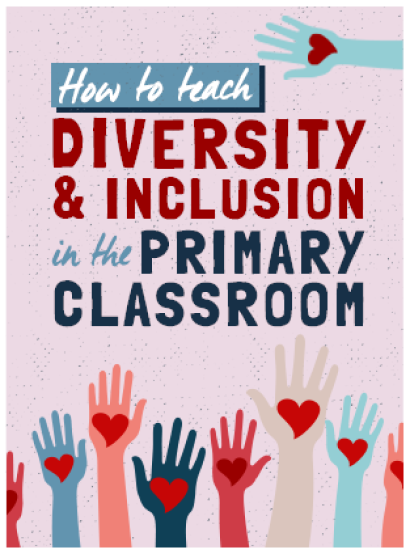Inclusion in schools – child-centred strategies

Try these three key steps to develop a truly inclusive learning environment in your setting, says Will Cannock…

- by Will Cannock

Whether you’re digesting the latest government announcement on levelling up, keeping an eye on the progress of the SEND review or even watching a national sporting event, it’s highly likely that you will come across a reference to inclusion.
The desire to create a more inclusive society touches every part of our lives. For those of us working in education, nowhere is the focus more important than in our schools.
But how can we create an environment where all students feel included, valued and supported?
At Charles Dickens Primary School in Southwark, we have a higher-than-average number of pupils with SEND, so great emphasis is placed on the importance of inclusive teaching.
Our approach is based on three key strategies, each of which has a role to play in helping schools to create a more inclusive learning environment for all children. Here’s how I think they could work for you…
1. Maintain consistency
It is probable that an effective strategy for building inclusive policies into one part of a school could be adapted and replicated more widely.
For example, in our school we have introduced a range of strategies to encourage and reinforce positive behaviour… including bingo cards.
We’ve seen how much the children love being spotted working hard, listening carefully and being kind, and getting their cards marked off as a reward.
It’s a really successful initiative that has increased positive behaviour and resulted in far fewer teachers needing guidance on managing incidences in their lessons.
A key strength of the scheme is that the bingo cards can be adapted to individual pupils’ needs.
So there might be specific actions included to help a chatty child stay focused, or encourage a shy pupil to raise a hand to answer a question.
But its real success lies mostly in the fact that children in classes across the school have the cards, which means pupils are familiar with them and they’re not a novelty.
2. Encourage independence
Teachers can sometimes have different routines in place to help children take care of their personal belongings, get the equipment they need for each lesson, and put sporting apparatus away after PE.
A more inclusive strategy is one that, as much as possible, doesn’t have a group of children doing something inherently different to everyone else.
Trending
Children are happier, more engaged and make better progress in school when they get the support they need to navigate the day without requiring the help of an adult.
So standardising common routines can be a great way to encourage pupils to be more independent.
In our school, every child has access to a visual timetable to help them see what lessons are being taught now and next, so no child with additional needs feels singled out by having information displayed visually.
3. Support learning
One area where a focus on inclusion can make the greatest difference is in the way children with additional needs are supported in the classroom.
Pupils who do not yet have the vocabulary or processing skills to grasp the meaning of unfamiliar terminology used in curriculum areas such as science, English and geography can be at a disadvantage from the start and will be at increased risk of falling behind.
One of the ways we have become more inclusive is to pre-teach subject-specific vocabulary to all children a few weeks before it comes up in a lesson, helping them to build their knowledge of these terms ahead of time.
Teachers select the specialist terms they are planning to teach – e.g. tectonic, atmospheric and terrestrial – and create word banks and maps in advance of the lesson.
These resources include an appropriate symbol or simple image to represent each of the words and phrases so they are immediately more accessible to children with speech, language and communication needs.
As inclusion becomes increasingly important, in education and in wider society, provision for children with and without SEND will continue to evolve.
Child-centred strategies should be at the heart of this and with a combination of universal and more targeted support, schools can create a more inclusive learning environment for all.
Will Cannock is assistant head and SENDCo at Charles Dickens Primary School in Southwark which uses Widgit symbols to develop its resources to support inclusion.










